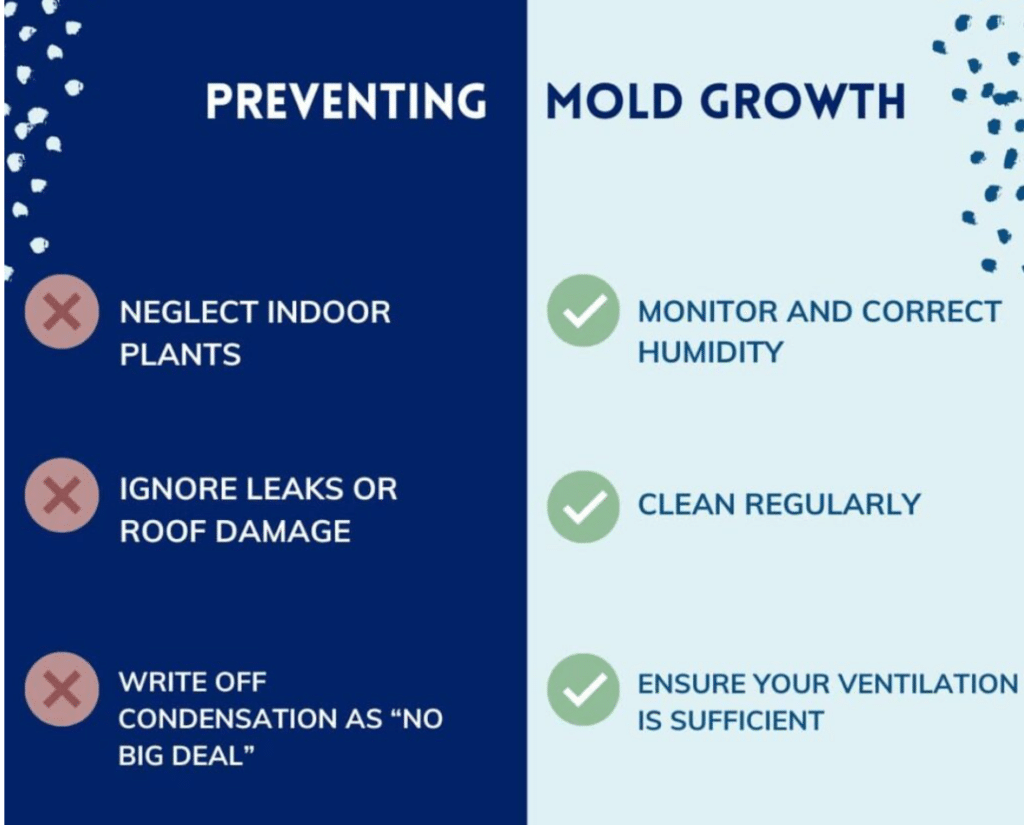
Discovering mold in your home can already be cause for concern – but that can be especially true if it’s an unfamiliar orange color. While less common than black mold, orange mold poses risks that homeowners should be aware of.
Knowing what orange mold is, why it appears, and how to prevent it, you can keep your home safe and healthy. In this article, we’ll dive into the basics, explore the risks, and offer tips for prevention and maintenance.
Causes of Orange Mold Growth
Orange mold thrives in environments with high moisture and humidity. This mold is commonly found in areas with poor ventilation, water leaks, or previous water damage.
Bathrooms, kitchens, and basements are prime spots for orange mold due to the frequent presence of water and humidity. Poor drainage around your home and high indoor humidity can also contribute to its growth.
To prevent orange mold, moisture management is your best bet. Regularly check for leaks or improper ventilation, and use dehumidifiers to keep humidity levels under control.

What Sets Orange Mold Apart?
Orange mold stands out due to its unique color and texture. Unlike the more common black mold, orange mold often appears slimy and can produce a musty odor.
It typically grows on organic materials such as wood, food, and drywall, making it particularly troublesome in kitchens and basements. Its bright, distinctive color makes it more noticeable than other molds, but it can spread quickly if not addressed.
Risks of Orange Mold
Exposure to orange mold can lead to various health issues, especially for individuals with allergies, asthma, or weakened immune systems.
Common symptoms include coughing, sneezing, skin rashes, and eye irritation. Prolonged exposure can exacerbate respiratory problems and lead to more severe allergic reactions. It’s crucial to address mold problems promptly to avoid these health risks.
Structurally, orange mold can also be a considerable menace. It typically grows on organic materials like wood, drywall, and insulation. Over time, it can weaken these materials, leading to structural damage.
This can result in costly repairs if not addressed early. Mold can also cause discoloration and unpleasant odors, further reducing your home’s comfort and aesthetic appeal.

Prevention and Other Maintenance
Preventing various types of mold will require diligent moisture control and regular maintenance. Your exact routine might vary depending on your home, location, and other factors, but try to keep these basics in mind:
- Control Humidity: Use dehumidifiers to maintain indoor humidity levels below 60%. Ensure proper ventilation in areas prone to moisture, like bathrooms, kitchens, and basements.
- Fix Leaks Promptly: Regularly inspect your home for leaks in plumbing, roofs, and windows. Repair any leaks immediately to prevent moisture buildup.
- Improve Ventilation: Install exhaust fans in high-moisture areas and use them regularly. Open windows when possible to increase airflow and reduce humidity.
- Regular Cleaning: Clean areas prone to mold growth with mold-inhibiting cleaners. Pay special attention to bathrooms, kitchens, and basements.
- Monitor Indoor Plants: Overwatering indoor plants can contribute to high humidity levels. Ensure proper drainage for plant pots and avoid excessive watering.
- Check for Condensation: Monitor areas where condensation forms, such as windows and pipes. Insulate these areas to prevent moisture buildup.
When to Call a Professional
If you notice a persistent musty odor or visible mold growth that keeps returning despite your efforts, it’s time to seek professional help.
Extensive mold infestations, especially those covering large areas or penetrating deeply into walls and ceilings, require specialized equipment and expertise to be removed safely. Professionals can also conduct thorough inspections to identify hidden mold and address the underlying issues causing mold growth, such as water leaks or poor ventilation.
Wrapping Up
In conclusion, preventing orange mold is essential for a healthy home. Control humidity, fix leaks promptly, and ensure proper ventilation to keep mold at bay.
If mold issues persist, always call a professional for a thorough inspection and advice. These steps will help you maintain a safe, comfortable home and protect your family’s health. For guidance on mold concerns or an in-depth inspection of your home, call Boggs Inspection Services today in Olympia, WA, and surrounding areas.



